法国中央理工高等电力学院,萨克雷,法国
2022-03-19大都会建筑事务所
大都会建筑事务所
在一个私有化的时代,城市正面临着重大的挑战:对公共领域的投资越来越依赖私人资产。由于这种对集体协议的重组,建筑的作用往往局限于只注重形状和表面的视觉影响,而缺乏对新的教育、社会和公民层面的贡献。巴黎中央理工学院发起的新工程学校设计竞赛成为探索如何应对这一严峻挑战的绝佳机会。
实验室的空间通常是线性的,一个被无数走廊分割的大盒子。这种建筑类型在城市环境中形成了“黑幕”——由于它功能极度的孤立性和内部性,建筑成为一面巨大的墙。其实我们可以将实验室设想为开放平面网格中独立模块的集合,在这种情况下,城市可以容纳无尽的功能模块及活动。这种方法为不断变化的需求提供了稳定的框架,功能可以根据需要重组或加强。
这种重构意味着自由制定新的学习方式,在密集知识领域内促进社区构建、多元化和人群的多样性,同时确保工程学院作为教育孵化器的纯粹运作。OMA的设计将城市主义与学校相结合,取代了原先校园的同质化体验。
“城市实验室”的概念由此而来。它产生了一种开放城市学校,结构框架下的创造性无序。通过构建一条斜切“城市实验室”的主街,建筑体验与周围环境之间可以无缝衔接,在未来的社区中心与地铁站之间提供一条便捷的公共路线。围绕着这条主干道,项目的功能分布在不同类型和不同规模的建筑中,在城市网格的次要街道上排布。独特的轻质屋顶覆盖了整个建筑群,在不同建筑之间建立强有力的联系,使“外部”的过渡空间随时可以自由使用。□(庞凌波 译)
In an era of privatization, cities are facing a major challenge: investment in the public domain depends increasingly on the private sector. As a result of this reframing of the collective agreement, the role of architecture is often reduced to the visual impact of its shape and surface rather than contributing to a new educational, social and civic dimension. The competition launched by the Ecole Centrale Paris for the design of a new engineering school has become the perfect opportunity to explore ways to answer this demanding challenge.
Laboratories are typically planned as linear buildings, a large box divided by endless corridors. Such a typology creates a "blackout"of the urban conditions; the building becomes a gigantic wall due to its extremely isolated and internalised programmes. We can instead imagine laboratories as a collection of discreet parcels in an open plan grid; in this way, a city can accommodate endless configurations of programmes and activities. This method provides a stable framework for constantly changing requirements; the program may be reconfigured or intensified as necessary.
This re-contextualisation implies freedom to formulate new types of learning styles that promote community, plurality and diversity of the population within a dense field of knowledge,while ensuring the pure operation of the engineering school as an educational incubator.OMA's design integrates urbanism with the school, supplanting the previous homogeneous experience of the campus.
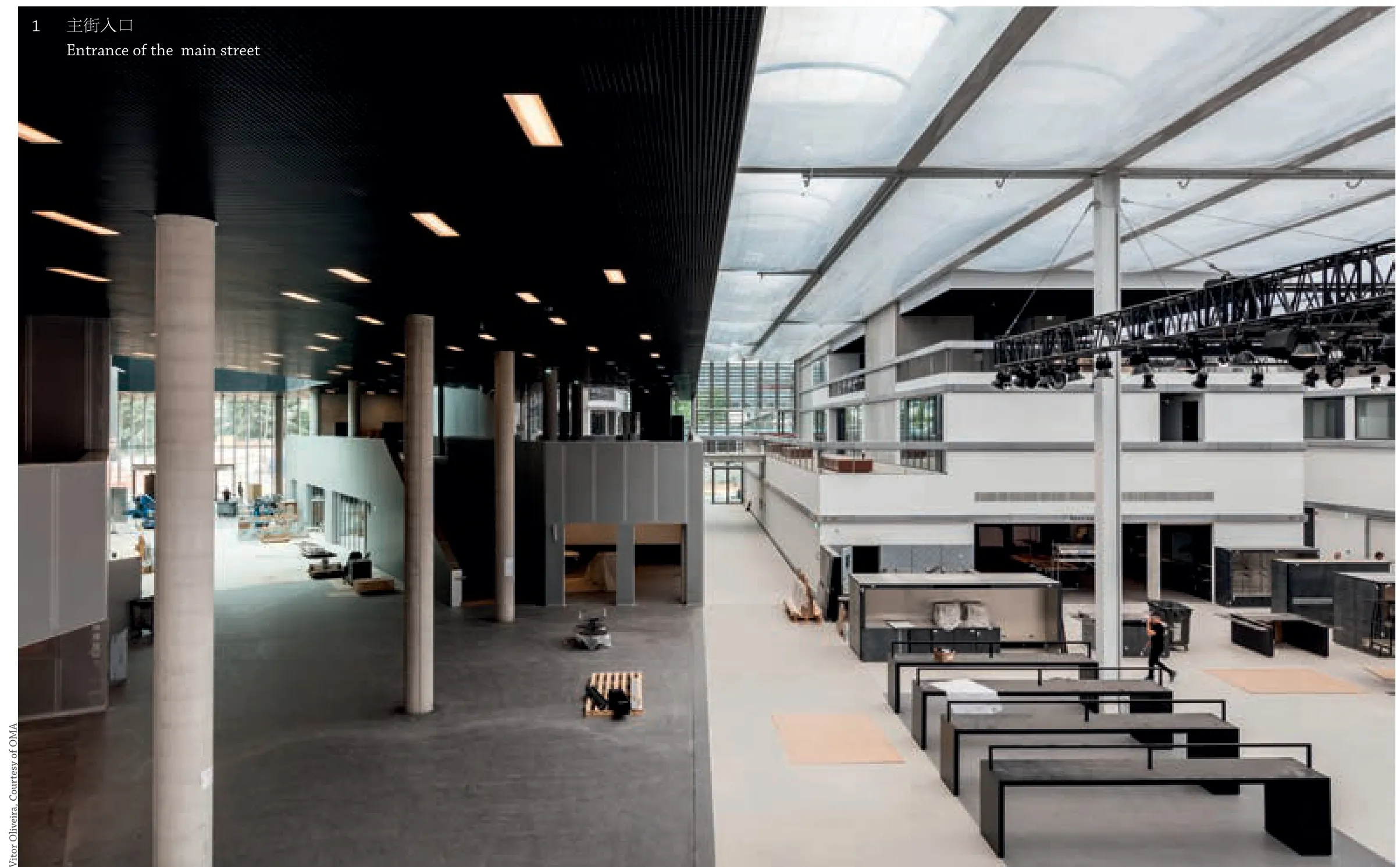
1 主街入口Entrance of the main street
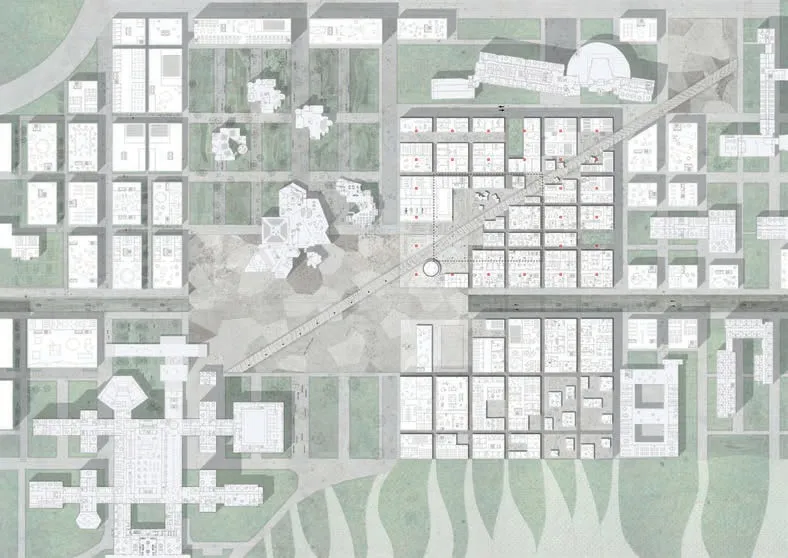
2 总平面Site plan
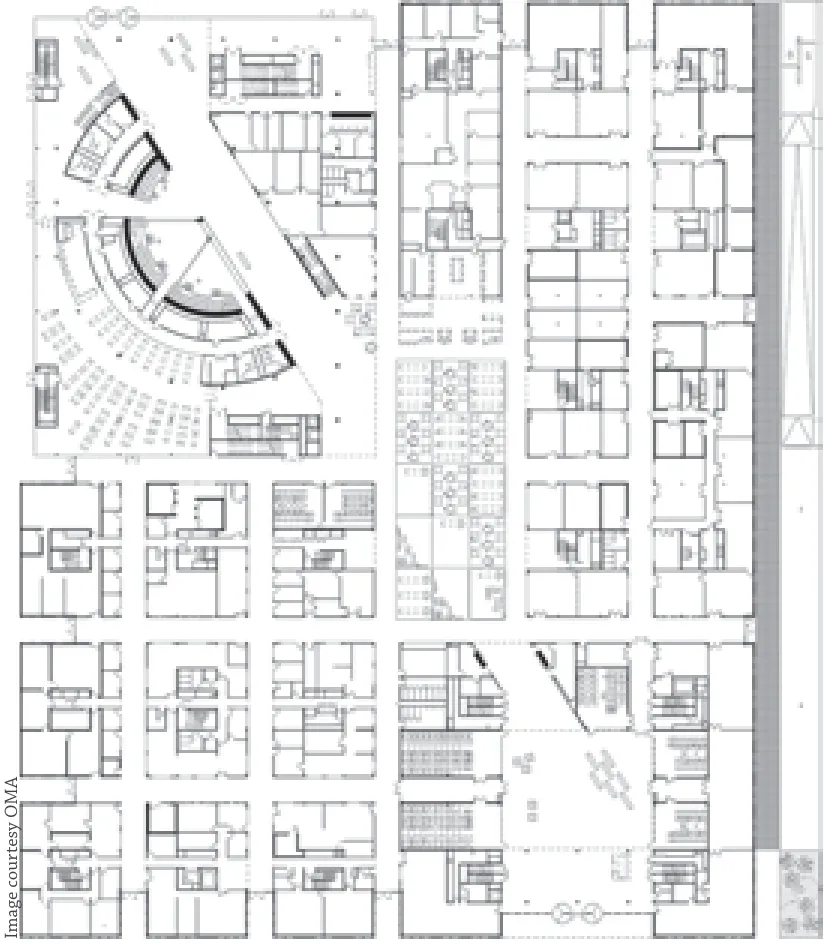
3 首层平面Ground floor plan
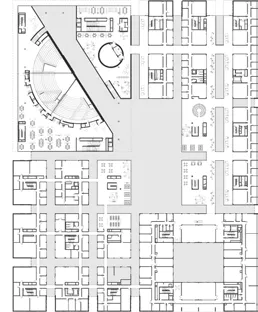
4 二层平面First floor plan
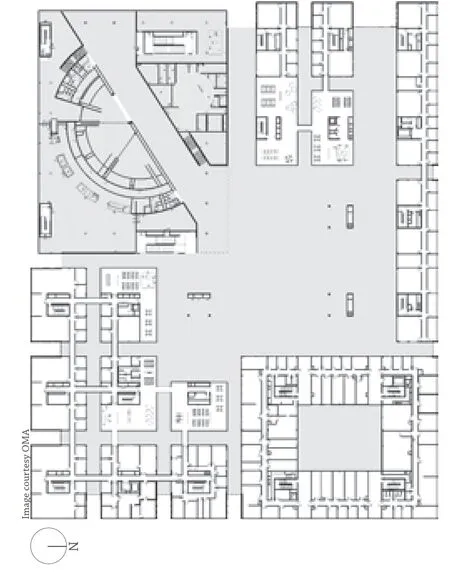
5 三层平面Second floor plan
Thus, the concept of a Lab City was formed.The architecture of the Lab City generates an open urban school, with creative disorder framed under a structural skeleton. By creating a main street, cutting diagonally across the Lab City, the design allows a seamless experience between the building and its surroundings,providing a convenient public route between the future heart of the neighbourhood and thefuture subway station. Around this urban spine,the program is spread in different buildings of various typologies and sizes, organised on an urban grid served by secondary streets. A unique lightweight roof covering the entire complex completes the scheme by creating a strong link between the different buildings and allowing"external" protected spaces to be used freely all year long.□
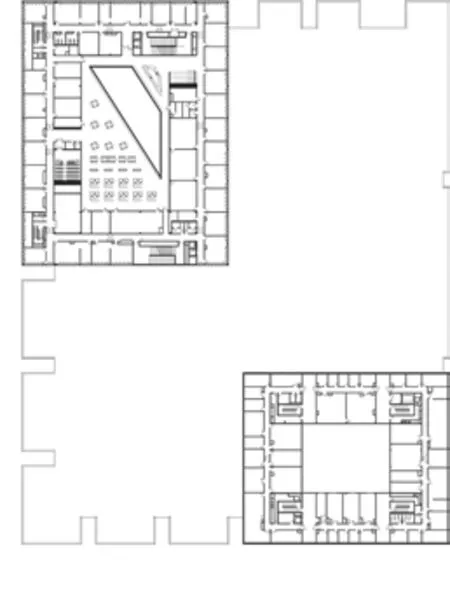
6 四层平面Third floor plan
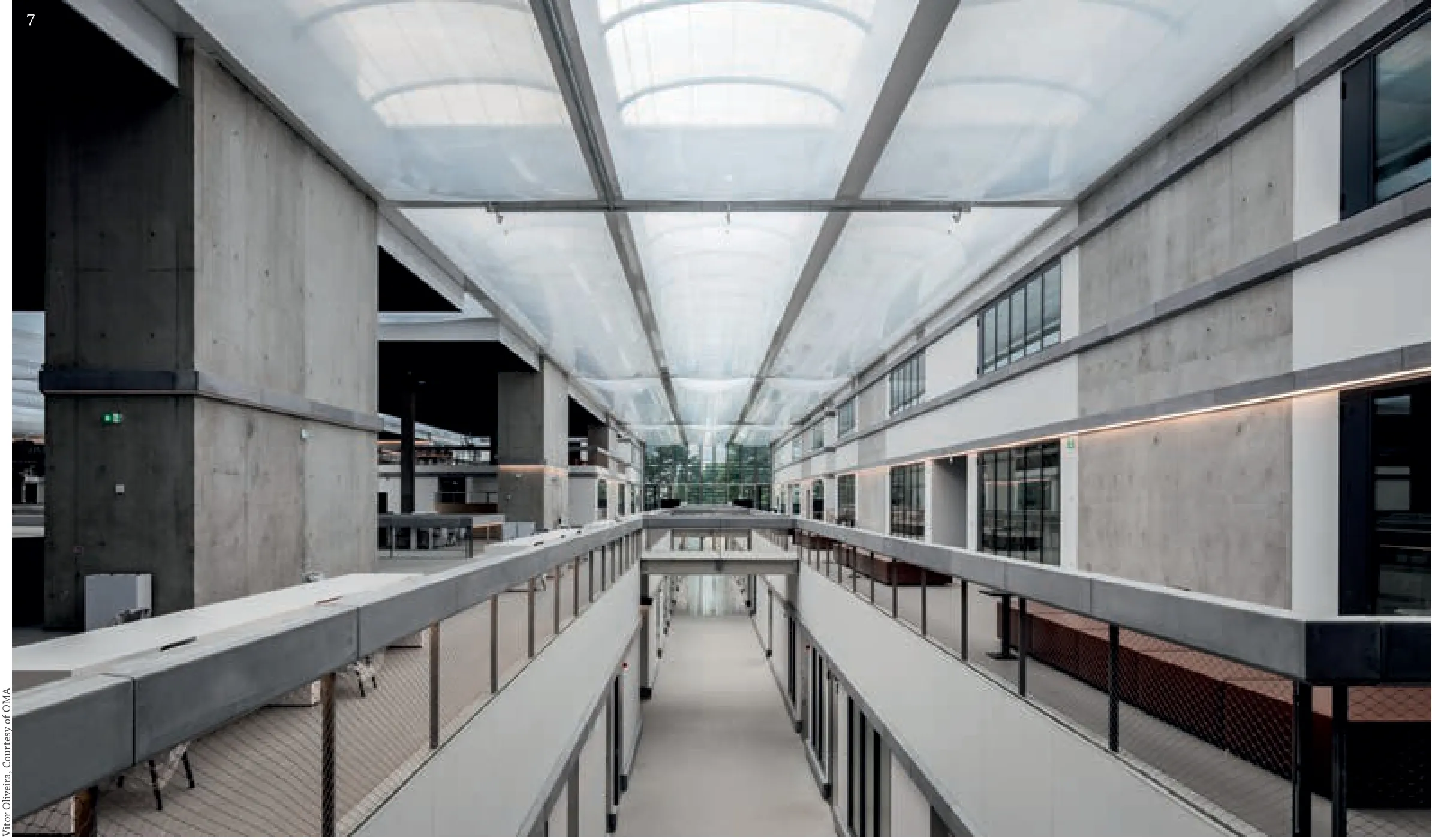
7 二层室内Interior view of L1

8 立面Façade
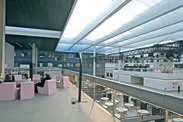
9 三层开放空间Open space in L2
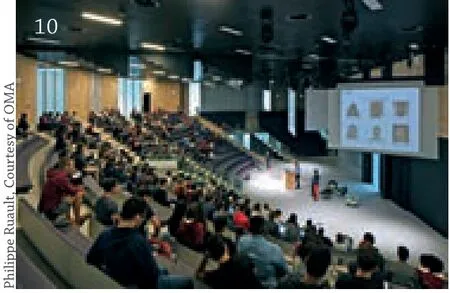
10 报告厅Auditorium

11 首层大厅Main hall in L0
